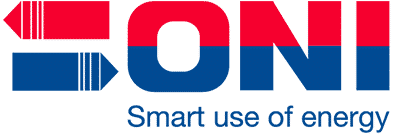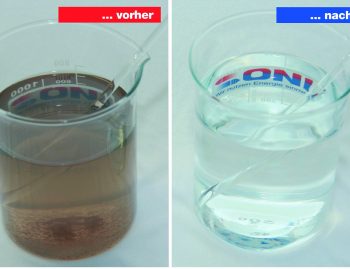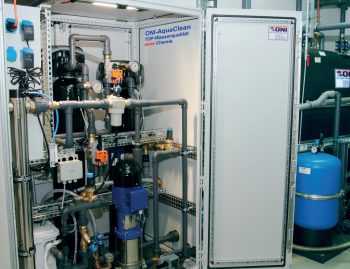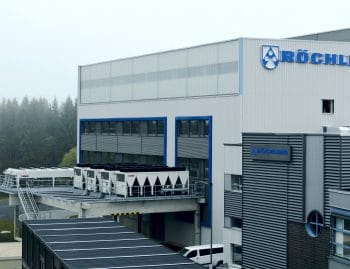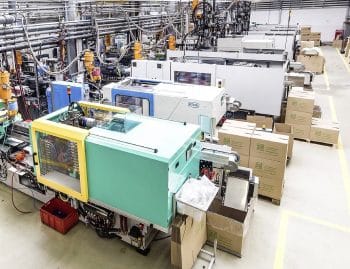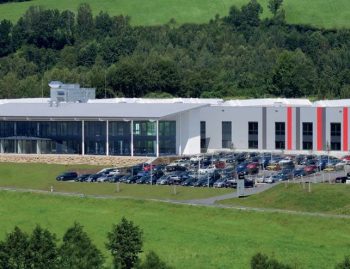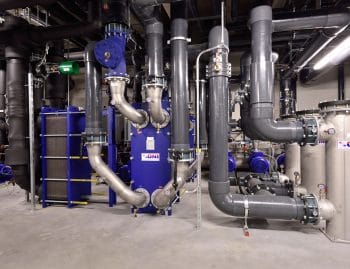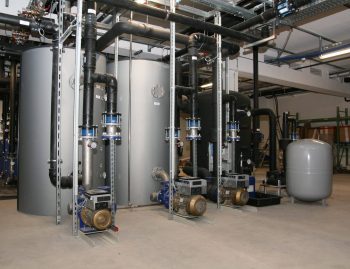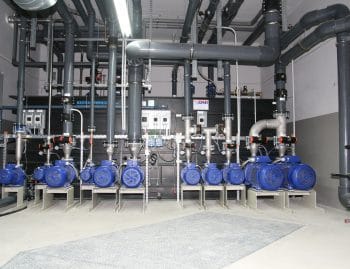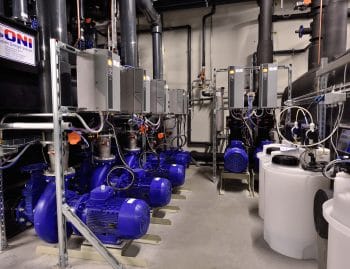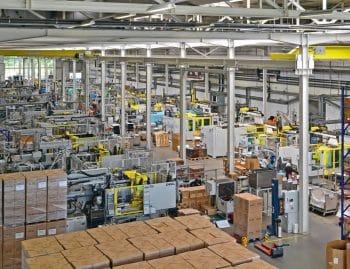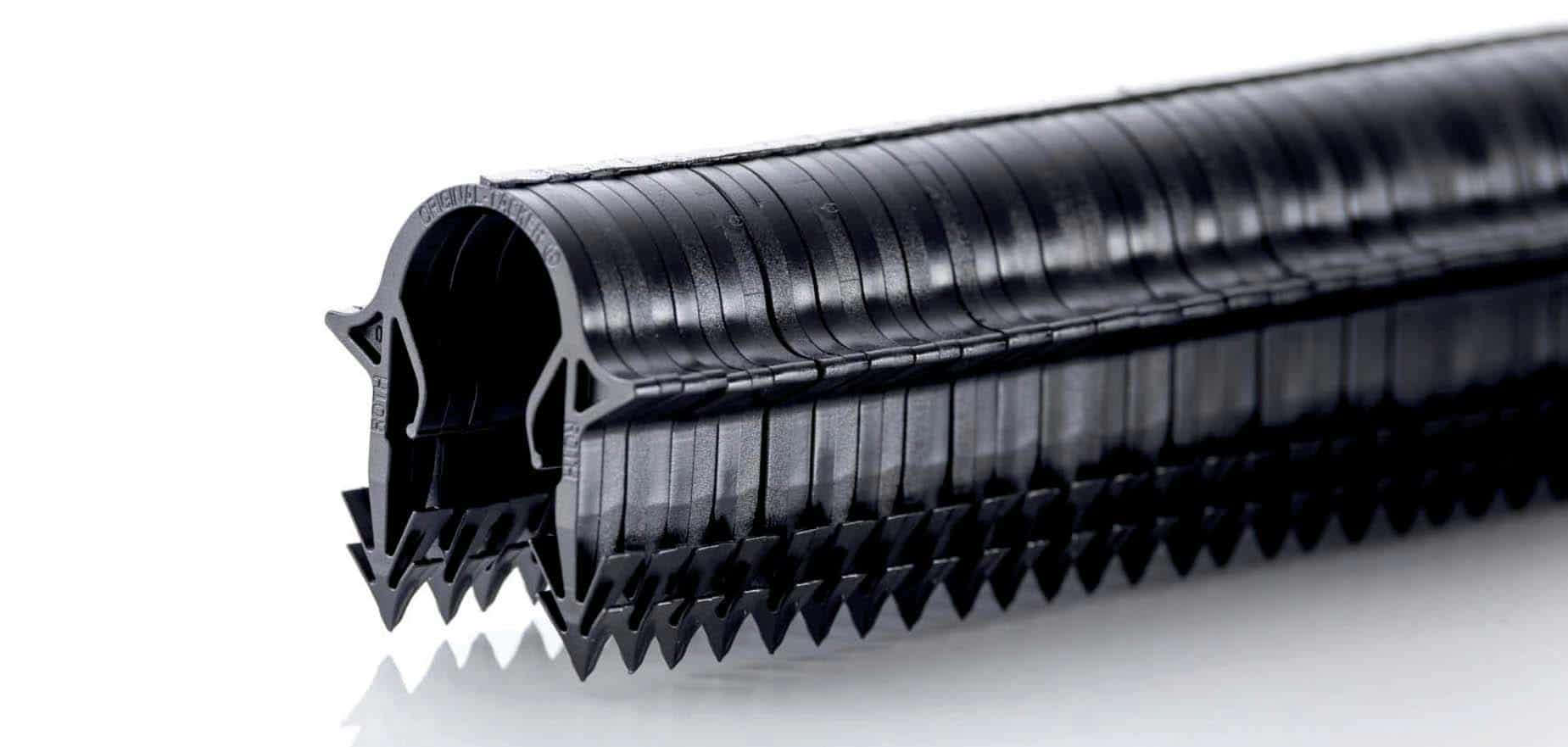
Efficiency and environmental protection as two sides of the same coin
Completely climate-neutral production is a noble goal, but for companies it has to be right "at the end of the day", but also at the bottom line. Roth Industries has reconciled this, at least at the Wolfgruben site, in 2017. Oni's energy-saving technology in the injection molding sector and the corresponding planning in advance played a major role in this.
Roth Industries, a company with 1,250 employees and to which Roth Plastic Technology belongs, has been pursuing the goal of environmentally friendly production for several years. Completely climate-neutral production was achieved in the course of 2017 at the Wolfgruben site in Upper Hesse, which is primarily home to injection molding technology. "This is a milestone in the development of our family business," explains Dr. Anne-Kathrin Roth, representative of the owner family.
However, successful corporate development depends above all on innovative products and efficient production, each of which creates competitive advantages. Roth Plastic Technology therefore began years ago to invest only in particularly energy-efficient injection moulding machines - and to make consistent use of the waste heat that still accumulates. Roth has been working with Oni Wärmetrafo on this since the 1990s and at several locations. Oni was also used to develop and implement the energy concept for the latest extensive expansion of Roth's Wolfgruben site.
Multiple use of energy
As part of the expansion of its injection molding production and logistics areas, Roth has procured additional injection molding machines and automation systems at its Wolfgruben plant and created additional office units and logistics areas. "The machines are currently heating the office and storage areas up to outside temperatures of -6 degrees Celsius "without a drop of oil", as Managing Director Herbert Blodig announces with the company's experience over the first winter in the thoroughly harsh climate of northern Hesse. According to his estimate, this alone will save around 15,000 liters of heating oil". Part of the waste heat goes into "concrete core activation" to keep the loading zones ice-free in winter. Here, the Oni plant delivers the heat to a solution implemented by Roth using components from its own product range.
Roth currently operates 38 injection moulding machines with clamping forces between 200 and 7,500 kilonewtons, some of which are multi-component machines. Further expansion is already being planned. In addition, Roth has two of the world's largest blow molding plants for tank plants and, last but not least, extensive know-how in fiber composite technology: According to Roth, for example, the world's only hot water pressure tank is made of plastic. Ring lines in production supply the hydraulics of the injection moulding machines and the mould circuits with cooling water. Depending on the cooling capacity required and the heat requirement of the heating technology, the Oni control system ensures the most energy-efficient energy management - under the premise of safe operation and depending on parameters such as the outside temperature.
The waste heat from the injection molding machines is primarily used to meet the heat requirements of modern low-temperature heating systems. The compressed air compressors via heat exchangers are also integrated into the system. Only the excess energy is dissipated via free coolers. Only closed systems with speed-controlled pumps are used here. A chiller with three registers is used when energy peaks occur. Free coolers are available for hydraulic cooling.
The heart of the entire energy-saving technology with control system, heat exchangers and pumps is located in a compact container that can be set up flexibly. Several interfaces in the system allow the container location to be easily changed in the event of operational changes - and last but not least the technology to be quickly exchanged in the event of possible problems. According to Herbert Blodig, however, there were no such problems, but this flexibility will still be used because the next expansion stage of the plant is already being planned. The container can then be moved temporarily, for example during construction, or permanently. The expansion of the entire plant is also possible easily and cost-effectively with an additional module. In all efforts to reduce the specific and total energy consumption in the company, production safety has the highest priority. For this reason, complete redundancy has been ensured for all pumps and filters. Regular, automatic switching between the duplicated system components ensures that they are always ready for operation when required. This also facilitates maintenance.
Mold temperature control: Less energy - more quality

In addition, this type of temperature control has an effect on machine efficiency and component quality. The quality of the molded parts increases significantly, since cycle times tend to be shorter due to the much larger water reservoir than with typical temperature control units and the uniformity of the cooling. In addition, the quality of the component surfaces is consistently better. As an example, Herbert Blodig refers to a 1.7 kilogram thermotank cap whose cycle time could be reduced by 18 percent - with significantly reduced warpage and high surface quality.
Quickly from the idea to normal operation
"The first ideas for our new building in Wolfgruben were born at the end of 2014, but then it also came to fruition. Production started as early as mid-2016," Herbert Blodig sums up the process briefly. Accordingly, the planning of the energy technology and its implementation had to run parallel to the other construction phases as well as the commissioning. The application at Roth also had some special aspects for Oni: Among other things, Roth produces a wide range of components for modern air conditioning technology in apartments and commercial buildings in several plants.
Accordingly, Roth has extensive know-how in heating and cooling technology. The concepts and solutions presented by Oni can therefore be questioned and evaluated very specifically with regard to energy efficiency and sustainability - with obviously favourable results. In addition, Roth's own products were integrated into the overall Oni concept in many places. "Nevertheless," says Herbert Blodig, "the energy-saving technology ran quickly and punctually. We hardly had a start-up phase. The control system was programmed in advance, and only minor adjustments were necessary during the first two weeks of operation. The only rework required was the replacement of a pump with a smaller one, which saves a further 400 euros in electricity costs per year.
Can and want
The fact that technologies for the sustainable reduction of energy consumption are available at many points in the company - also in energy-intensive companies - should also become clear in this example. And that this will generate advantages both on the cost side and in terms of product quality. Long-term, comprehensive strategies are particularly promising. The fact that Roth can consistently pursue sustainability strategies despite the tight competitive environment is also a concern of the owner family. In coordination with experts from production, building management and external specialists, it actively and resolutely pushes ahead with the corresponding investments. "The fact that the entire company has demonstrably been producing climate-neutrally since 2017, also thanks to the energy-saving Oni systems, is not an end in itself. At the same time, competitiveness was strengthened thanks to cost reductions," says Dr. Anne-Kathrin Roth.
